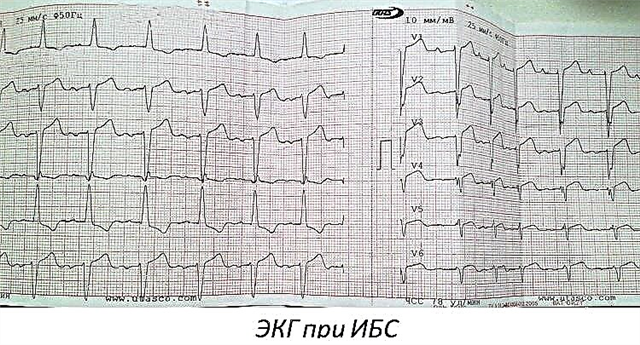The development of acute respiratory diseases is always accompanied by a significant deterioration in health. A runny nose and fever are typical companions of colds, flu and SARS, which cause a lot of discomfort. Due to disturbed nasal breathing and fever, body aches, malaise, drowsiness and headaches occur. Is it possible to quickly stop unpleasant manifestations and ease the course of ENT diseases?
As a rule, the temperature with a runny nose indicates an infectious lesion of the body. Waste products of pathogenic microorganisms provoke the synthesis of special substances called pyrogens. It is they who make changes in the temperature regime, as a result of which a fever occurs - fever, chills, increased sweating, etc. You can eliminate unpleasant symptoms by taking antipyretic, anti-inflammatory and antiviral drugs.
Fever - what is the reason?
 In everyday life, a cold is called a respiratory disease, which is accompanied by rhinitis and fever. The provocateurs of pathological processes in the respiratory organs in most cases are viruses - adenoviruses, enteroviruses, rhinoviruses, influenza virus, coronaviruses, etc. Metabolites (waste products) of infectious agents cause inflammation in the nasopharynx. In this regard, the mucous membrane, in particular the goblet cells, begin to produce an excessive amount of viscous secretion. It contains protective cells that "try" to contain the development of viruses and thereby suppress inflammation.
In everyday life, a cold is called a respiratory disease, which is accompanied by rhinitis and fever. The provocateurs of pathological processes in the respiratory organs in most cases are viruses - adenoviruses, enteroviruses, rhinoviruses, influenza virus, coronaviruses, etc. Metabolites (waste products) of infectious agents cause inflammation in the nasopharynx. In this regard, the mucous membrane, in particular the goblet cells, begin to produce an excessive amount of viscous secretion. It contains protective cells that "try" to contain the development of viruses and thereby suppress inflammation.
Inflammatory reactions in the respiratory tract stimulate the production (synthesis) of pyrogens. These substances affect the processes of thermoregulation in the body, therefore, with a cold, the body temperature often rises. It should be noted that fever is not an enemy, but a friend of our body. Even with a slight change in temperature indicators, the activity of viruses decreases, due to which the healing process is accelerated.
A cold is a harmless, but rather unpleasant disease that requires drug treatment. But doctors warn that it is impossible to bring down the temperature without special need. This will only contribute to the development of infection and, accordingly, increase the chances of developing post-infectious complications.
Doctor's advice
Snot and a temperature of 37 are the most reliable symptoms that signal the development of a respiratory disease. Violation of the general well-being negatively affects the patient's quality of life, therefore, it is advisable to start treatment as early as possible. To carry a cold "on the legs" is fraught with the development of complications, therefore, the patient must observe a semi-bed regime for 5-7 days. In addition, it is recommended:
- regularly ventilate the room in the room;
- do not overload your diet with fatty and spicy foods;
- avoid strenuous physical activity;
- consume more alkaline warm drinks.
Important! If your health worsens and the temperature rises to 40 ° C, you need to urgently call a doctor at home.
Medicines can only be taken on the advice of a specialist. It is possible to determine the causative agent of the infection and the most effective methods for its destruction by the results of a clinical blood test. As a rule, a runny nose and fever result from damage to the respiratory system by pathogenic viruses. In this case, it is possible to destroy the pathogenic flora by taking antiviral drugs.
Antiviral medications
How to properly treat rhinitis and fever? Treatment methods should primarily be aimed at destroying the causative agent of the infection. For this, it is advisable to use drugs of etiotropic action, which include antiviral drugs. It is impossible to hesitate in taking medications, since the infection progresses rapidly and can provoke complications - pyelonephritis, sinusitis, pneumonia, acute bronchitis, etc.
 Usually, the following anti-viral agents are included in the treatment regimen for colds:
Usually, the following anti-viral agents are included in the treatment regimen for colds:
- Rinikold;
- Sinupret;
- Grammidin;
- Anaferon;
- "Kagocel";
- "Arbidol";
- "Gripferon".
Taking antiviral drugs should be combined with symptomatic medications - nasal drops, antipyretic and anti-inflammatory drugs. If within 3-4 days after the start of drug treatment, the patient's well-being does not improve, you will have to seek help from a specialist.
The lack of positive dynamics may indicate the addition of a bacterial infection or chronic inflammation in the respiratory organs. In this case, antibiotics - penicillins, macrolides or cephalosporins - will be included in the treatment regimen.
What to do with rhinitis?
What to do if snot and temperature appear? Hyperthermia (fever) is usually caused by inflammation in the nasopharyngeal mucosa. By eliminating the runny nose and, accordingly, the infection, you can normalize the temperature readings. What is the right way to treat rhinitis?
- if the secret is thick enough and poorly separated from the walls of the mucous membrane, it is advisable to rinse the nose with saline at least 3-4 times a day;
- in the absence of mucus, but difficulty in nasal breathing, vasoconstrictor drops - "Naphthyzin", "No-salt", "Galazolin" can be instilled into the nose;
- lacrimation in combination with a runny nose indicates severe inflammation of the nasopharynx, which can be stopped by nasal anti-inflammatory drugs - "Pinosol", "Pinovit", "Sinusan";
- antiviral drops - "Gripferon", "Interferon", "Genferon", help to destroy the pathogenic flora in the nasopharynx;
- it is possible to moisten the mucous membrane and eliminate the foci of inflammation in it with the help of aerosol inhalations with "Eucasept", "Chlorophyllipt", "Rotokan".
It is undesirable to use antiviral, vasoconstrictor and immunostimulating drops at the same time without a doctor's recommendation.
If an adult with a runny nose secretes not only a transparent secret, but also pus, most likely bacteria have become the cause of inflammation of the mucous membrane. In this case, antibacterial agents - "Polydexa", "Fusafungin" and "Bioparox" will help to cure a runny nose.
How to bring down the temperature?
In most cases, with a cold, the temperature does not exceed 37.2-37.5 ° C. With subfebrile fever, the use of antipyretic drugs is not recommended, as this will only reduce the body's resistance to infection. But the temperature of 38 ° C is quite a weighty and justified reason for taking antipyretics.
 With hyperthermia, sweating increases, which can cause dehydration and deterioration of the patient's well-being. Moreover, if the thermometer approaches 40-41 ° C, protein synthesis is disrupted in the organism, which negatively affects the functioning of the brain. In children, fever can cause seizures and hallucinations. To reduce body temperature, you can use the following pharmacy products:
With hyperthermia, sweating increases, which can cause dehydration and deterioration of the patient's well-being. Moreover, if the thermometer approaches 40-41 ° C, protein synthesis is disrupted in the organism, which negatively affects the functioning of the brain. In children, fever can cause seizures and hallucinations. To reduce body temperature, you can use the following pharmacy products:
- Coldrex;
- Rinzasip;
- "Paracetamol";
- "Analgin";
- Efferalgan.
Low temperature - what is the reason?
Low temperature (hypothermia) is a sign of a violation of thermoregulation processes in the body or severe hypothermia. Hypothermia can also indicate malfunctions of the endocrine system, internal bleeding, poisoning and drug overdose. Typical manifestations of hypothermia are:
- blanching of the skin;
- lethargy;
- drowsiness;
- fast fatiguability;
- lowering blood pressure.
A drop in body temperature to 32 ° C is a very alarming signal. This is fraught with a slowdown in the body's metabolic processes and even death.
It should be noted that a low temperature signals a weakening of the body's immune defense. Therefore, hypothermia is often seen in people with the flu or colds. To normalize body temperature, it is recommended to consume more hot drinks, take a hot bath and keep warm with a heating pad. To strengthen the immune system and normalize thermoregulation processes, it is advisable to take adaptogens for 1-2 months - tincture of ginseng, echinacea or lemongrass.



